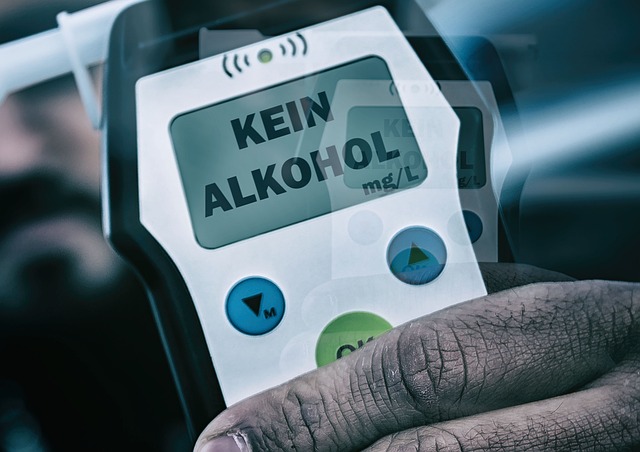Accurate Blood Alcohol Level (BAL) testing is critical for managing high-risk reoffenders with DUI charges, providing fair justice and insights into rehabilitation progress. Reliable BAL test outcomes, achieved through strict protocols like equipment calibration, proper specimen handling, and chain of custody management, act as deterrents and aid in effective decision-making to reduce recidivism rates, ultimately enhancing community safety in high-risk DUI scenarios.
In the realm of criminal justice, accurately assessing high-risk reoffenders’ alcohol levels is paramount for effective DUI management. BAL (Blood Alcohol Level) testing plays a crucial role in this process, but ensuring precise results isn’t without challenges. This article delves into understanding BAL testing for high-risk individuals, highlighting why accurate results are key to successful supervision. We explore common hurdles and their solutions, present best practices, and discuss the profound impact of valid BAL data on managing reoffenders’ risk.
- Understanding BAL Testing for High-Risk Reoffenders
- Accurate Results: Key to Effective DUI Management
- Challenges in BAL Testing and Their Solutions
- Best Practices for Ensuring Valid Test Outcomes
- The Impact of Accurate BAL Data on Reoffender Supervision
Understanding BAL Testing for High-Risk Reoffenders

BAL (Blood Alcohol Level) testing is crucial for managing high-risk reoffenders, especially those facing DUI (Driving Under the Influence) charges. This scientific method provides an accurate measure of an individual’s blood alcohol concentration, helping to ensure fair and consistent justice. For repeat offenders, BAL testing offers vital insights into their adherence to rehabilitation programs and compliance with legal requirements.
Understanding the implications of BAL results is essential in the DUI management process. Accurate readings can guide interventions, support treatment plans, and serve as a powerful deterrent for future offenses. By implementing rigorous BAL testing protocols, authorities can navigate complex cases more effectively, fostering a safer environment for communities at risk.
Accurate Results: Key to Effective DUI Management

Accurate results from BAL (Blood Alcohol Level) testing are paramount in effective DUI (Driving Under the Influence) management, especially when dealing with high-risk reoffenders. In many jurisdictions, repeat offenders face stricter penalties and longer licenses suspensions than first-time culprits. Therefore, the precision of BAL test outcomes is crucial to ensure these punishments fit the crime and act as a deterrent for potential reoffending.
Inaccurate tests could lead to unfair consequences for those accused mistakenly or underestimate the severity of offenses, undermining the entire DUI management system. Consequently, it’s essential to maintain rigorous standards in equipment calibration, operator training, and adherence to established protocols to guarantee the reliability and validity of BAL test results.
Challenges in BAL Testing and Their Solutions

BAL testing, crucial for accurate assessment in DUI cases involving high-risk reoffenders, often faces challenges that can skew results. One significant hurdle is the complex interaction between alcohol and individual metabolisms, leading to unpredictable blood alcohol levels (BAC). To overcome this, advanced data analytics and standardized testing protocols are essential. By employing sophisticated algorithms and considering demographic factors, BAL tests can provide more precise readings.
Additionally, ensuring the integrity of the testing process itself is vital. Environmental factors, such as temperature and handling procedures, can influence results. Implementing strict quality control measures, including regular calibration of equipment and well-trained personnel, helps maintain accuracy. For high-risk DUI management, addressing these challenges ensures that BAL testing delivers reliable data, ultimately facilitating more effective decision-making and public safety.
Best Practices for Ensuring Valid Test Outcomes

To ensure accurate and reliable results from BAL testing, especially in high-risk scenarios like DUI management involving high-risk reoffenders, several best practices should be implemented. Firstly, regular calibration and maintenance of equipment are crucial to maintaining accuracy. Any instrument used for breath alcohol analysis must be properly calibrated according to the manufacturer’s guidelines and local regulations. This ensures that readings are consistent and reliable.
Secondly, proper collection and handling of specimens are vital. Collection procedures should adhere to standardized protocols to minimize potential sources of error. Trained personnel should collect samples in a sterile environment, using clean, approved devices to prevent contamination. Additionally, maintaining a controlled chain of custody is essential to ensure the integrity of evidence. This involves meticulous documentation at each step, from collection to testing, to prevent tampering or accidental alterations.
The Impact of Accurate BAL Data on Reoffender Supervision

Accurate Behavioral Analysis (BAL) testing data plays a pivotal role in effective reoffender supervision, particularly for high-risk individuals convicted of DUI (Drunk Driving Under Influence). The insights provided by BAL tests enable probation officers and parole boards to make informed decisions about an individual’s behavior and potential for reoffending. By accurately gauging emotional control, stress response, and decision-making skills, these assessments help tailor supervision strategies to address specific challenges faced by high-risk reoffenders.
In the context of DUI management, precise BAL data is instrumental in monitoring individuals’ progress and adherence to rehabilitation plans. It helps identify early warning signs of potential relapse, enabling proactive interventions. This, in turn, enhances public safety by reducing recidivism rates among DUI offenders, ensuring a more successful transition back into society. Thus, prioritizing accurate BAL testing results is essential for achieving effective reoffender supervision, particularly when dealing with high-risk individuals who pose significant dangers to themselves and others on the road.
Accurate Bal (Breath Alcohol) testing is paramount in managing high-risk reoffenders and effective DUI (Driving Under the Influence) prevention. By understanding the challenges and implementing best practices, we can ensure valid test outcomes that significantly impact reoffender supervision. Accurate BAL data plays a crucial role in public safety by enabling more effective strategies to deter future offenses among high-risk individuals.






